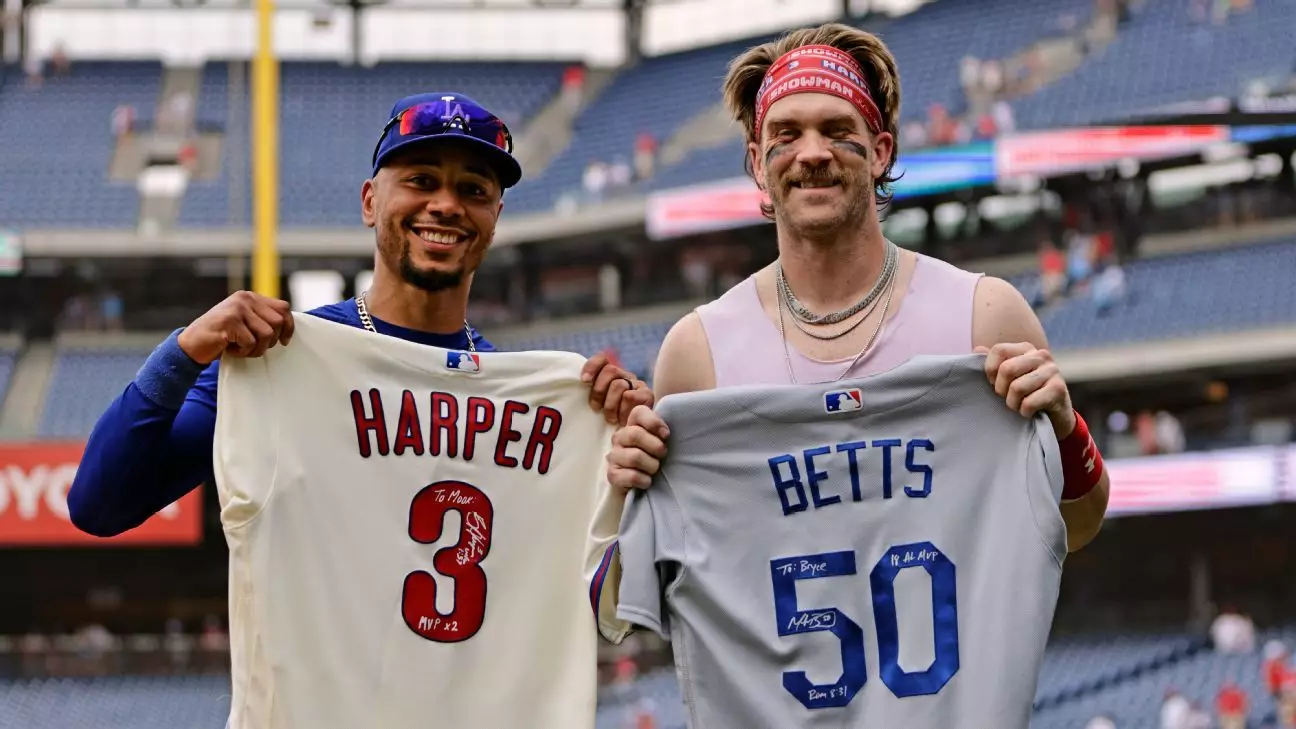In the realm of Major League Baseball, few topics ignite as much debate as team payrolls and spending habits. At the center of this storm is the Los Angeles Dodgers, a franchise that has transformed into a financial juggernaut, culminating in a staggering payroll of nearly $320 million. This hefty figure has not only established the Dodgers as one of baseball’s elite teams but also placed them under the microscope of scrutiny and envy from across the league. Bryce Harper, the Philadelphia Phillies‘ star and two-time NL MVP, openly championed the team’s aggressive spending, bluntly dismissing the critiques as the grumbling of „losers.“ His unabashed praise for the Dodgers is both a reflection of their success and a testament to the shifting landscape of baseball economics.
Salaries and Market Dynamics
The rise in average Major League Baseball salaries to over $5 million signals a paradigm shift within the sport. The Dodgers, alongside the New York Mets, exemplify this transformation, with both teams showcasing incredible financial muscle. The Mets’ payroll, which features the record-setting $61.9 million salary for Juan Soto, has placed them at the forefront of the spending wars for three consecutive Opening Days. Not to be outdone, the Dodgers have bolstered their roster by adding high-profile players, further pushing their payroll into the stratosphere.
However, one must question the sustainability of such spending habits. Although their investments have yielded a prosperous roster, they also teeter on the edge of financial responsibility. While competitive balance and fairness in the league are vital for its health, the absence of a salary cap has allowed franchises like the Dodgers to dominate financially, causing some to worry about the very spirit of the game being compromised.
Deferred Payments and Its Implications
A curious tactic employed by the Dodgers involves deferred payments, a method that allows them to maintain a manageable immediate payroll while reaping the benefits of star talent. Notably, Shohei Ohtani’s astronomical salary, reduced to a present value, highlights the complexities of financial maneuvering within the league. This not only creates discrepancies in perception but also alters the landscape of player contracts and negotiations. As Ohtani’s case illustrates, the way contracts are structured can lead to misunderstandings regarding a player’s value and impact, potentially skewing the market.
For the Dodgers, this approach has allowed them to maintain a competitive edge while painting a picture of financial prowess. However, this could lead to long-term challenges, as deferred payments can burden future financial flexibility. As teams like the Phillies, who are also significantly investing in player talent, rise in prominence, the reliance on such financial strategies could be tested.
The Competitive Crisis: A League in Transition
Amidst this backdrop of inflated salaries and intense competition, Major League Baseball finds itself at a crossroads. Commissioner Rob Manfred’s acknowledgment of fan concerns regarding the lack of a salary cap reflects a growing unease about the sustainability and fairness of the league. The increasing polarization between high-spending teams and those with limited financial means raises questions about the competitive integrity of the game.
While Harper’s enthusiasm for the Dodgers‘ approach and the allure of playing in Los Angeles is undeniable, it also establishes a playing field where large-market teams continuously attract top talents, leaving smaller franchises struggling to keep pace. This evocative scenario poses a critical question for the future of baseball: Can the league find a balance that fosters competitiveness while allowing teams to flourish economically?
The financial arms race ignited by powerhouses like the Los Angeles Dodgers and the New York Mets not only defines the present landscape of Major League Baseball but also sets the tone for its future. Bryce Harper’s candid admiration for the Dodgers encapsulates the mixed emotions surrounding this era of baseball—one filled with opportunity, but fraught with challenges for maintaining balance and fairness within the league. As the sport navigates these turbulent waters, the decisions made today will undeniably shape the contours of baseball for generations to come.


Napsat komentář